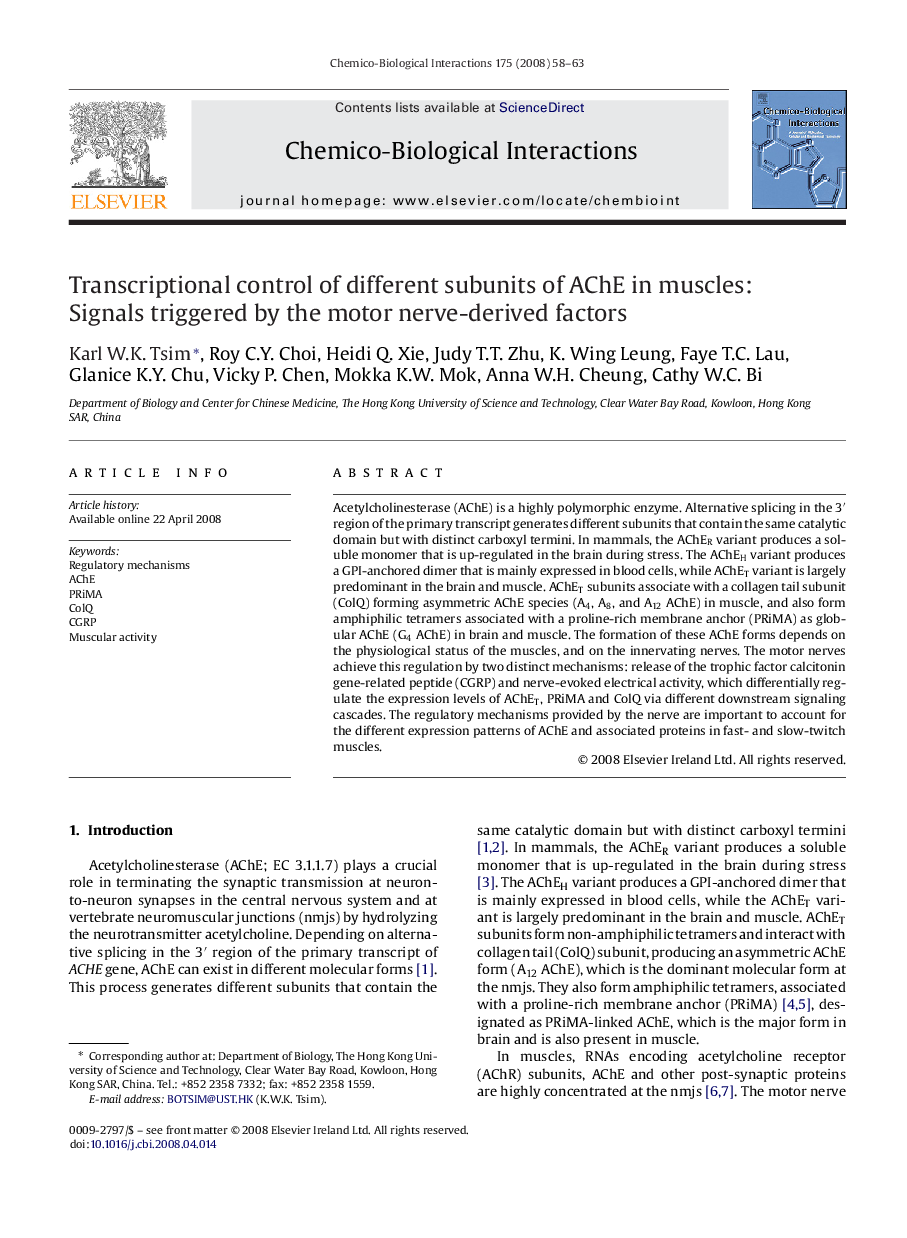| کد مقاله | کد نشریه | سال انتشار | مقاله انگلیسی | نسخه تمام متن |
|---|---|---|---|---|
| 2581556 | 1561653 | 2008 | 6 صفحه PDF | دانلود رایگان |

Acetylcholinesterase (AChE) is a highly polymorphic enzyme. Alternative splicing in the 3′ region of the primary transcript generates different subunits that contain the same catalytic domain but with distinct carboxyl termini. In mammals, the AChER variant produces a soluble monomer that is up-regulated in the brain during stress. The AChEH variant produces a GPI-anchored dimer that is mainly expressed in blood cells, while AChET variant is largely predominant in the brain and muscle. AChET subunits associate with a collagen tail subunit (ColQ) forming asymmetric AChE species (A4, A8, and A12 AChE) in muscle, and also form amphiphilic tetramers associated with a proline-rich membrane anchor (PRiMA) as globular AChE (G4 AChE) in brain and muscle. The formation of these AChE forms depends on the physiological status of the muscles, and on the innervating nerves. The motor nerves achieve this regulation by two distinct mechanisms: release of the trophic factor calcitonin gene-related peptide (CGRP) and nerve-evoked electrical activity, which differentially regulate the expression levels of AChET, PRiMA and ColQ via different downstream signaling cascades. The regulatory mechanisms provided by the nerve are important to account for the different expression patterns of AChE and associated proteins in fast- and slow-twitch muscles.
Journal: Chemico-Biological Interactions - Volume 175, Issues 1–3, 25 September 2008, Pages 58–63